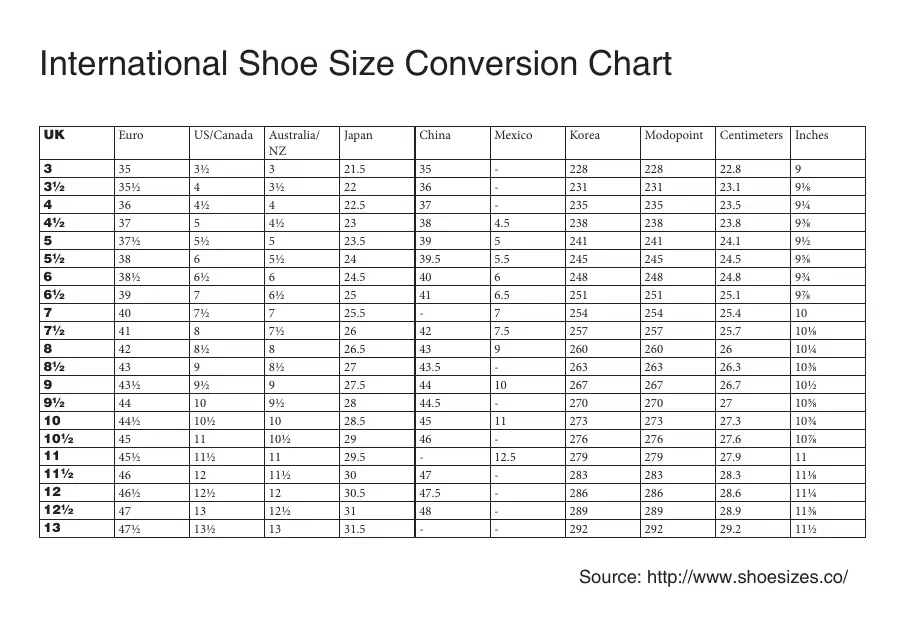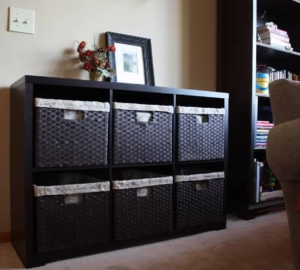Buying shoes, especially online or from international brands, can be a frustrating experience if you’re not familiar with different sizing systems. In Kenya, where we encounter footwear from various parts of the world – from local markets to international e-commerce platforms like Jumia and ShoeBox – understanding how shoe sizes convert is essential for a perfect fit.
At Retail Place, we’re here to demystify shoe sizes with a comprehensive guide and conversion charts, ensuring you step out in comfort and style every time.
Why Are Shoe Sizes So Confusing?
Unlike clothing, which often uses letters (S, M, L) or straightforward measurements, shoe sizing systems vary wildly by region and even by brand. There’s no single global standard, leading to confusion when buying across borders. The main systems you’ll encounter are:
- US Sizes: Predominantly used in North America.
- UK Sizes: Common in the United Kingdom and some Commonwealth countries, including Kenya for locally made or UK-sourced footwear.
- EU (European) Sizes: Also known as Continental sizes, widely used across Europe and increasingly seen on labels of shoes sold globally.
- CM/JP (Centimeters/Japanese) Sizes: A straightforward system based on foot length in centimeters, common in Asia.
The Importance of Knowing Your True Foot Measurement
Before diving into conversions, the most accurate way to find your perfect fit is to measure your foot length. This provides a reliable baseline regardless of the sizing system.
How to Measure Your Foot at Home:
- Place a piece of paper on a hard surface, touching a wall.
- Stand on the paper with your heel against the wall.
- Have someone mark the longest part of your foot (usually your big toe) on the paper.
- Measure the distance from the wall to your mark in centimeters (cm).
- Measure both feet! If one is larger, use the measurement of the larger foot.
Global Shoe Size Conversion Charts
Remember that these charts are general guidelines. Sizing can still vary slightly between brands, styles (e.g., pointed shoes versus round-toe), and even materials.
Women’s Shoe Size Conversion Chart
| US Size | UK Size | EU Size | CM (Foot Length) |
| 5 | 3 | 35-36 | 21.6 |
| 5.5 | 3.5 | 36 | 22.2 |
| 6 | 4 | 36-37 | 22.5 |
| 6.5 | 4.5 | 37 | 23 |
| 7 | 5 | 37-38 | 23.5 |
| 7.5 | 5.5 | 38 | 23.8 |
| 8 | 6 | 38-39 | 24.1 |
| 8.5 | 6.5 | 39 | 24.6 |
| 9 | 7 | 39-40 | 25.1 |
| 9.5 | 7.5 | 40 | 25.4 |
| 10 | 8 | 40-41 | 25.9 |
| 10.5 | 8.5 | 41 | 26.2 |
| 11 | 9 | 41-42 | 26.7 |
Men’s Shoe Size Conversion Chart
| US Size | UK Size | EU Size | CM (Foot Length) |
| 6 | 5 | 39 | 23.5 |
| 6.5 | 5.5 | 39-40 | 24.1 |
| 7 | 6 | 40 | 24.4 |
| 7.5 | 6.5 | 40-41 | 24.8 |
| 8 | 7 | 41 | 25.4 |
| 8.5 | 7.5 | 41-42 | 25.7 |
| 9 | 8 | 42 | 26 |
| 9.5 | 8.5 | 42-43 | 26.7 |
| 10 | 9 | 43 | 27 |
| 10.5 | 9.5 | 43-44 | 27.3 |
| 11 | 10 | 44 | 27.9 |
| 11.5 | 10.5 | 44-45 | 28.3 |
| 12 | 11 | 45 | 28.6 |
Children’s Shoe Size Conversion Chart (Toddler to Big Kid)
| US Kid’s | UK Kid’s | EU Kid’s | CM (Foot Length) |
| 4 | 3 | 19 | 11.4 |
| 5 | 4 | 20 | 12.4 |
| 6 | 5 | 22 | 13.3 |
| 7 | 6 | 23 | 14.3 |
| 8 | 7 | 24 | 15.2 |
| 9 | 8 | 26 | 16.2 |
| 10 | 9 | 27 | 17.1 |
| 11 | 10 | 28 | 17.8 |
| 12 | 11 | 30 | 18.7 |
| 13 | 12 | 31 | 19.4 |
| 1 | 13 | 32 | 20.3 |
| 2 | 1 | 33 | 20.8 |
| 3 | 2 | 34 | 21.6 |
| 4 | 3 | 35 | 22.5 |
| 5 | 4 | 37 | 23.5 |
| 6 | 5 | 38 | 24.1 |
Tips for Kenyan Shoppers When Buying Shoes
- Always Check the Retailer’s Specific Size Chart: This is paramount! Many online stores, especially international ones shipping to Kenya, will have their own brand-specific size charts. These are often more accurate than generic conversion charts.
- Read Product Reviews: Look for comments from other buyers regarding sizing. Do people say the shoe runs true to size, small, or large? This is especially helpful if they mention their usual size in a known system.
- Consider the Style: Pointed-toe shoes often require sizing up compared to round-toe shoes. Boots might fit differently than sandals.
- Account for Width: Shoe sizes primarily refer to length. If you have wide feet, some brands offer different widths, or you might need to size up.
- Shop Later in the Day: Your feet tend to swell slightly throughout the day, so measuring or trying on shoes in the afternoon or evening can give you a more accurate fit.
- Wear Appropriate Socks: If you’re buying athletic shoes, wear the type of socks you’d normally wear with them.









